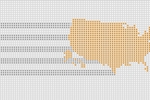
Cross-border Tax Talks
April 19, 2023
Threading the Needle: Pillar Two and the IRA’s Green Energy Credits
Doug McHoney (PwC's US International Tax Services Global Leader) is joined by Pat Brown, seven-time veteran of the podcast, and co-leader of PwC’s WNTS practice. Pat has previously worked in the private industry for 16 years, including several years as a VP of tax and director of tax policy. After Pat chooses his most and least favorite CBTT podcasts, Doug and Pat discuss green energy credits, the Pillar Two Model Rules and administrative guidance, how the US and UK R&D credits compare under Pillar Two, refundable credits, transferable credits, the equity investment inclusion election, and qualifying flow-through tax benefits.
Timestamps:
- 1:15 - What CBTT podcast episode has Pat enjoyed the most/least over the years?
- 2:30 - Why does it matter if green energy credits from the Inflation Reduction Act (IRA) are a 'good covered tax' in the context of Pillar Two?
- 7:20 - How do taxpayers generally determine what is a 'good covered tax' for Pillar Two under the model rules?
- 9:50 - Were these OECD rules based on basic accounting rules?
- 12:30 - The classic example that we’ve seen is the US R&D credit versus the UK R&D credit. Can you compare the two?
- 17:15 - Could the US convert the R&D credit to a refundable credit?
- 22:30 - What is a transferable credit? Is it analogous to a refundable credit?
- 25:45 - In February 2023, the OECD issued a first round of administrative guidance on Pillar Two. The US Treasury came out with a statement that “the package of guidance provides certainty on several key issues, including examples of protection of green tax credits including those that were included in the Inflation Reduction Act.” How does that statement resonate with Pat?
- 28:30 - What are equity partner investment structures?
- 33:25 - What did the administrative guidance say specifically on equity investment flow-through election and qualifying flow-through tax benefits?
- 37:55 - How are the rules around equity partner investment structures going to impact taxpayer behavior going forward?
Speakers
International Tax Services Global Leader, PwC US
Contact us












